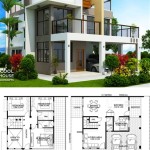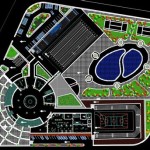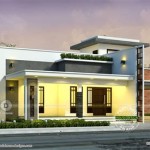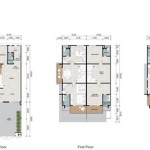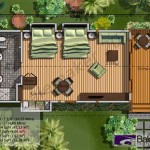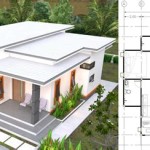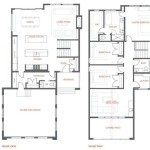Tiny House Cabin Plans: Designing Your Compact Retreat
The allure of simplified living and reduced environmental impact has fueled the popularity of tiny houses. Combining the rustic charm of a cabin with the efficient space utilization of a tiny house creates a unique dwelling that appeals to individuals seeking a minimalist lifestyle, a vacation getaway, or an affordable housing option. Tiny house cabin plans offer a blueprint for translating this vision into reality. These plans are crucial for ensuring structural integrity, optimizing space, and complying with local building codes.
Tiny house cabin plans encompass a broad range of designs, reflecting diverse aesthetic preferences and functional requirements. From traditional log cabins reimagined on a smaller scale to modern interpretations featuring clean lines and ample natural light, the possibilities are virtually limitless. The key to a successful tiny house cabin lies in careful planning and a thorough understanding of the design principles involved.
Key Considerations Before Choosing a Plan
Before selecting a specific tiny house cabin plan, several key factors warrant careful consideration. These include the intended use of the cabin, the desired location, the budget, and the level of construction expertise available. Defining these parameters will help narrow down the available options and ensure that the chosen plan aligns with specific needs and constraints.
The intended use of the cabin will significantly influence the plan selection. A vacation cabin designed for occasional use may prioritize aesthetics and relaxation over functionality and storage. Conversely, a tiny house intended for full-time living will require a more comprehensive layout with dedicated spaces for sleeping, cooking, working, and personal hygiene. Consider the number of occupants, their lifestyle habits, and any specific accessibility requirements when determining the appropriate size and layout.
The location of the cabin will dictate the necessary structural considerations. Cabins located in areas prone to extreme weather conditions, such as heavy snowfall or high winds, will require reinforced framing and appropriate insulation. Soil conditions and local building codes will also influence foundation design and material selection. Researching local regulations and consulting with a structural engineer are essential steps in ensuring the cabin's long-term stability and safety.
Budget constraints play a crucial role in determining the feasibility of a particular plan. The cost of materials, labor, and permits can vary significantly depending on the complexity of the design and the chosen finishes. Establishing a realistic budget and prioritizing essential features will help prevent cost overruns and ensure that the project remains financially viable. Consider exploring cost-effective building techniques, such as using reclaimed materials or simplifying the design, to minimize expenses.
The level of construction expertise available will influence the complexity of the plan and the need for professional assistance. Individuals with limited building experience may opt for simpler designs that are easier to construct and require less specialized tools and skills. Alternatively, hiring a contractor or working with a skilled builder can provide valuable guidance and ensure that the project is completed to a high standard. Be realistic about one's abilities and seek professional help when necessary to avoid costly mistakes and ensure structural integrity.
Elements of Effective Tiny House Cabin Plans
Effective tiny house cabin plans incorporate several key elements that contribute to functionality, aesthetics, and structural soundness. These elements include efficient space utilization, natural light optimization, adequate storage solutions, and sustainable design principles.
Efficient space utilization is paramount in tiny house design. Maximizing the use of every square foot is essential for creating a comfortable and functional living environment. Multi-functional furniture, such as convertible sofas and fold-down tables, can help save space and provide flexibility. Vertical space can be utilized by incorporating lofts for sleeping or storage. Clever storage solutions, such as built-in shelves and under-bed drawers, can help minimize clutter and keep the cabin organized.
Natural light optimization is crucial for creating a bright and airy living space. Large windows and skylights can bring in ample natural light, making the cabin feel more spacious and inviting. Strategic window placement can also provide passive solar heating, reducing energy consumption. Consider the orientation of the cabin and the surrounding landscape to maximize sunlight exposure while minimizing glare and overheating.
Adequate storage solutions are essential for maintaining a clutter-free and organized living environment. Built-in storage, such as shelves and cabinets, can help maximize space and keep belongings out of sight. Vertical storage, such as tall cabinets and wall-mounted shelves, can utilize otherwise wasted space. Consider incorporating storage solutions into the design from the outset to avoid the need for bulky and unsightly storage containers.
Sustainable design principles can enhance the environmental friendliness and long-term cost-effectiveness of the cabin. Using sustainable materials, such as reclaimed wood and recycled insulation, can reduce the environmental impact of the building process. Incorporating energy-efficient appliances and fixtures can help minimize energy consumption. Rainwater harvesting systems and composting toilets can further reduce the cabin's environmental footprint. Consider incorporating sustainable design principles into the plan from the outset to create a truly eco-friendly and sustainable tiny house cabin.
Types of Tiny House Cabin Plans
Tiny house cabin plans come in a variety of styles and layouts, each catering to different needs and preferences. Understanding the different types of plans available can help individuals narrow down their options and find the perfect fit for their lifestyle and budget.
Traditional Log Cabin Plans: These plans evoke a classic rustic aesthetic, featuring log walls, a pitched roof, and a cozy interior. Traditional log cabin plans often incorporate a fireplace or wood-burning stove for heating. Modern versions of these plans may incorporate energy-efficient features and updated amenities, while still maintaining the charm and character of a traditional log cabin.
Modern Cabin Plans: These plans emphasize clean lines, minimalist design, and ample natural light. Modern cabin plans often feature large windows, open floor plans, and contemporary finishes. They may also incorporate sustainable design features, such as solar panels and rainwater harvesting systems. Modern cabin plans are well-suited for individuals who appreciate a sleek and contemporary aesthetic.
Craftsman Cabin Plans: These plans showcase intricate details, handcrafted elements, and a warm and inviting ambiance. Craftsman cabin plans often feature exposed beams, built-in cabinetry, and a welcoming front porch. They may also incorporate natural materials, such as wood and stone, to create a rustic and earthy feel. Craftsman cabin plans are ideal for individuals who appreciate traditional craftsmanship and attention to detail.
Mobile Cabin Plans: These plans are designed to be transported on a trailer, allowing for flexibility and mobility. Mobile cabin plans often feature a lightweight construction and a compact layout. They may also incorporate off-grid features, such as solar panels and composting toilets, for independent living. Mobile cabin plans are well-suited for individuals who desire the freedom to travel and explore different locations.
Choosing the right tiny house cabin plan requires careful consideration of various factors, including the intended use of the cabin, the desired location, the budget, and the level of construction expertise available. By understanding the key considerations, elements of effective plans, and different types of plans available, individuals can make informed decisions and create a tiny house cabin that perfectly suits their needs and lifestyle.

13 Best Small Cabin Plans With Cost To Build Tiny Simple
:max_bytes(150000):strip_icc()/SL-731_FCP-83e310d6c4f4422a88bd36464339bf30.jpg?strip=all)
26 Tiny House Plans That Prove Bigger Isn T Always Better

Modern Tiny House Plans

Tiny Houses Living Large Southland Log Homes

27 Adorable Free Tiny House Floor Plans Craft Mart

17 Do It Yourself Tiny Houses With Free Or Low Cost Plans Building House Small Cabin

Garden Cabin Plans Tiny House Floor Small Layout

Tiny Houses Living Large Southland Log Homes
:max_bytes(150000):strip_icc()/SL-1830_FCR-79fe2709870b47fdb6b1fd9561483952.jpg?strip=all)
26 Tiny House Plans That Prove Bigger Isn T Always Better

Affordable Tiny House Plans 105 Sq Ft Cabin Bunkie With Loft Building Plan No Permit Small

